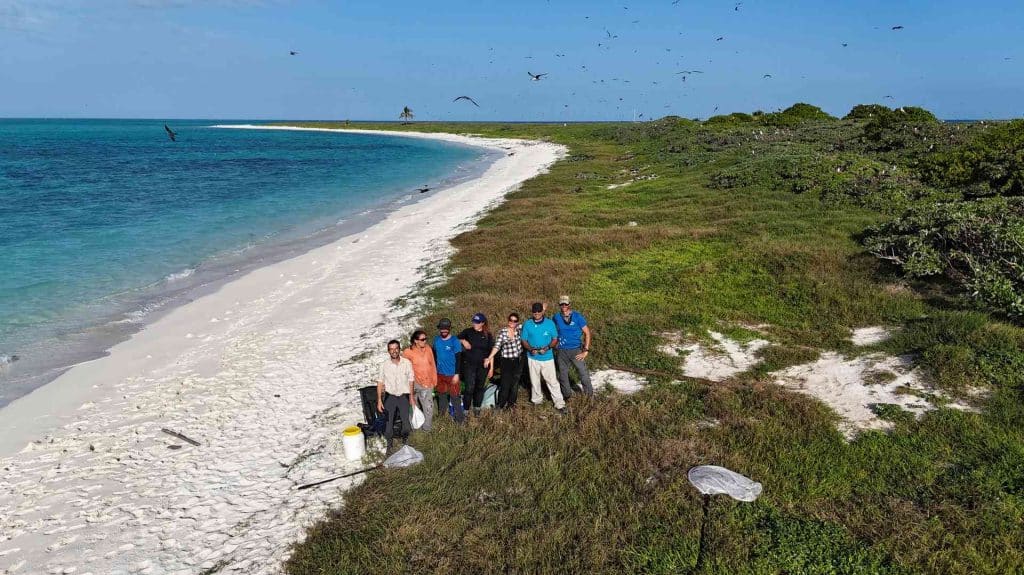
Seabirds are among the most threatened species in the world. Their great sensitivity to human pressures makes them genuine indicators of the state of health of terrestrial and marine ecosystems.
For several years, a vast research programme conducted jointly by the UMR IMBE and ENTROPIE is dedicated to the study of seabirds in the coral islands of the tropical Pacific.
As part of the MegafaunaThis project is the result of a partnership between the IRD (UMR ENTROPIE and IMBE, POPCO team), New Caledonian institutions managing natural areas (North Province, South Province, Coral Sea Natural Park - PNMC), the Pasteur Institute of New Caledonia and the veterinary services of the DAVARSeveral expeditions are planned for 2025. The aim is to learn more about the bird communities living on the isolated islets of the CMNP.
The most recent mission, carried out in July in the Chesterfield andEntrecasteauxhas enabled us to gather essential data. Biometric measurements and biological samples were taken from three emblematic breeding species:
the red-footed booby (Sula sula),
the sooty tern (Onychoprion fuscatus),
and the brown noddi (Anous stolidus).
These samples will provide valuable information on population genetics, connectivity between colonies and the exposure of birds to health risks, particularly avian influenza.
At the same time, an initial exploratory tracking study by GPS was carried out on brown noddis to gain a better understanding of their movements and distribution at sea during the breeding season.
Contacts for further information: Aurore Ponchon and Hélène de Méringo
